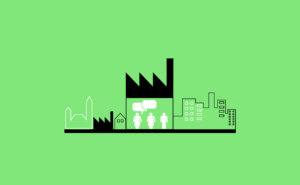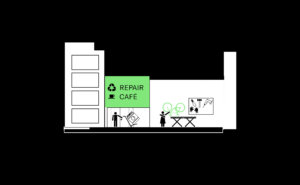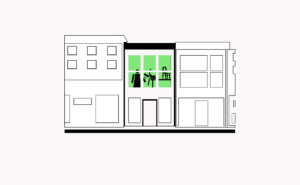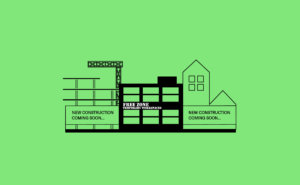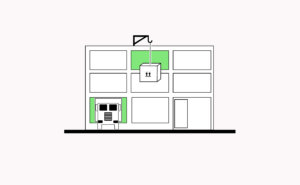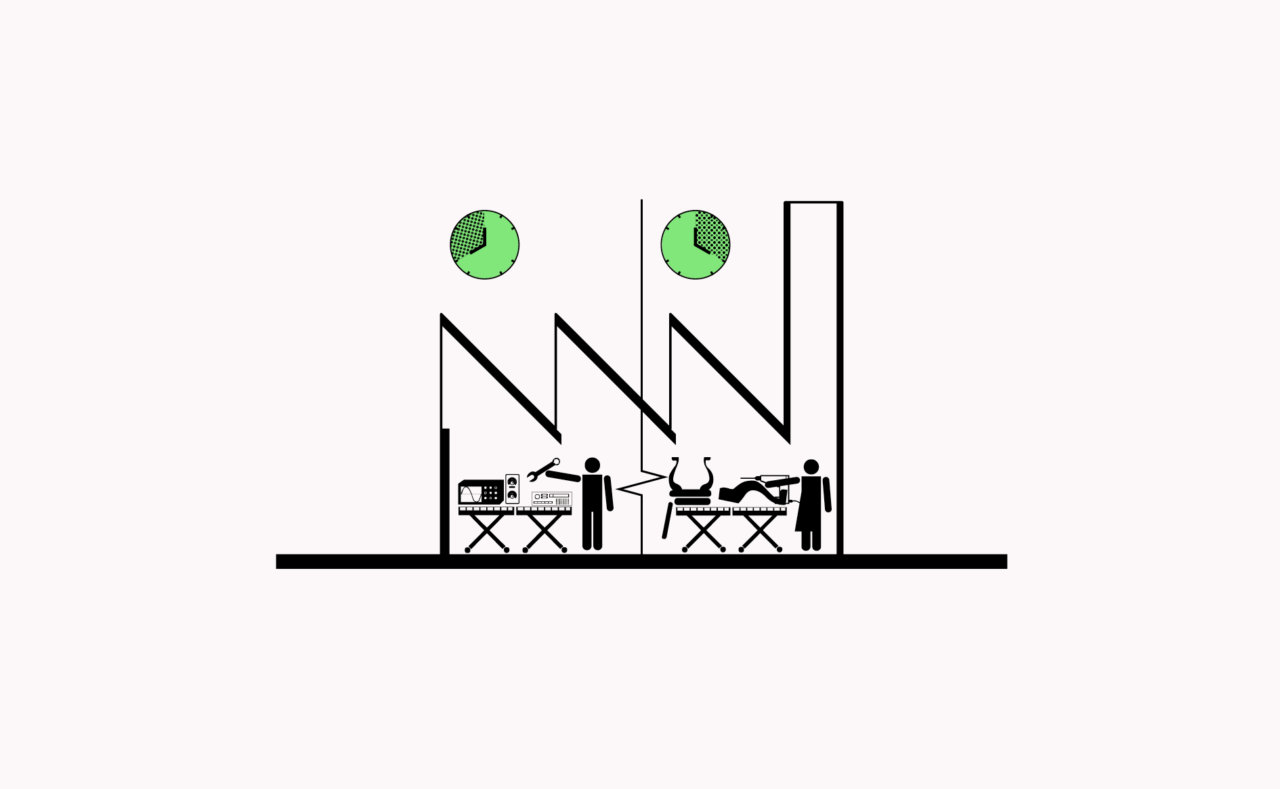
P.3 Flexible Spaces for Making
Meanwhile spaces can allow makers access to low-cost and low commitment access to space for making activities while also provide planners with a period to test new activities.
[Context] Meanwhile, temporary or transitional space can offer makers affordable and low-risk conditions to develop a proof of concept or test manufacturing processes. Framing a site as ‘meanwhile’, ‘transitional’ or ‘temporary’ helps to reduce any preconceptions or stigmas held against foreign activities (like manufacturing) by local stakeholders and interest groups. Furthermore, some lighter and clean manufacturing can be tested in less conventional spaces for manufacturing such as office buildings or stacked car parking spaces. Finally, for land owners who find it difficult to fill in a space after a large tenant has left, transitional uses can be a tool to test new usage typologies, particularly for communities of makers (see C.5 Varying Unit Sizes).
[Problem] While finding temporary occupants of vacant space is generally easy (particularly for cultural or community organisations), it can be challenging to find suitable businesses and organisations that will use the temporary period as a stepping stone before developing their idea or business into a longer term activity. Businesses or entrepreneurs may fail to think of temporary space to prototype or test small production runs. Consequently new businesses may struggle to find local contract manufacturers for N.7 Local Design and Prototyping and consequently send their testing and production off-shore from the beginning because of the assumed cheaper costs. The result is lost value for the local economy in terms of jobs, technical skills and local production chains. For businesses that use temporary spaces, B.7 Access to Technical Networks & Services may not be sufficient, rendering manufacturing challenging. Furthermore for building owners (of all types) temporary use may appear complex and daunting due to legal issues and the consequences of removing tenants at short notice. Building owners can also have little concern for their property, thus buildings can remain empty for extended periods of time and can evolve into blight.
[Forces] While temporary use of buildings can breathe new life into a site, it can also be used as a tool for gentrification to change poor neighbourhoods through ‘cultural’ of ‘community’ organisations or to mark the beginning of a ‘regeneration’ process of a former industrial neighbourhood. This can have positive outcomes however the consequences of gentrification should be properly studied, and where necessary suitable measures foreseen to avoid disrupting the neighbourhood (such as evictions or unreasonable rent increases). While meanwhile and temporary use are often a logical solution for activating vacant space, it can tread on questions of legality. Therefore occupants should sign a contract that assures the owner certain rights, including the capacity to easily terminate the contract. Even with water-tight contracts, it can be difficult to convince owners to allow temporary use unless the owners are threatened by a serious tax or fine, see R.10 Place-Based Financial Levers. Likewise, temporary use may involve buildings with old or poorly maintained infrastructure and electrical networks which can be costly to fix or requires a clear definition of who is responsible in the likelihood of a problem, see B.7 Access to Technical Networks & Services.
[Solutions] Take advantage of vacant buildings or spaces as an opportunity to test new ideas, create locations for start-ups or provide a place for community oriented activities. Temporary use of spaces, buildings or sites give priority to start-ups, N.7 Local Design & Prototyping to get new ideas off the ground and test production processes. This can be done in conjunction with R.11 Incentives for Research & Development. Temporary use can be seen as a community service vehicle and allow testing of activities that have a supporting role for a neighbourhood such as an P.8 Community Hub in Making Locations, spaces for P.6 Re-use & Repair Centres and P.7 Spaces for Development and Education. Likewise available space can be useful for businesses wanting to upscale (refer to C.4 Diverse Tenure Models). Temporary should not be considered simply an ephemeral activity, filling in time between two other activities. Quite the contrary, the temporary activity should be considered as a transitional period allowing for risks and exploring opportunities that could evolve into longer-term businesses, services or facilities. To activate temporary use, public authorities can use R.10 Place-Based Financial Levers which either support owners to make their buildings available for temporary use, or fine those that leave their buildings vacant. Temporary use could be facilitated by a R.3 Curator operating at the district scale who is capable of connecting the needs of the owner and user. A call for proposals is a useful way to identify projects and select ones deemed compatible. The curator should stipulate the rental agreements to ensure both the building owner and the activity have some level of protection and security while understanding costs and charges. One important dimension involves clearly defining the minimum temporary use period so that the projects can make appropriate investments.
[Contribution] Add contributions here.
